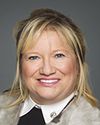We know from the 2009 Statistics Canada study, “Violent victimization of Aboriginal women in the Canadian provinces, 2009”, by Shannon Brennan, that aboriginal women were almost three times as likely as non-aboriginal women to report being the victim of a violent crime. The majority of violent incidents among aboriginal women were perpetrated by males acting alone, and as in most violent incidents, did not include the use of weapons or result in injury, except in cases of spousal violence where about half of the female victims reported being injured. Lastly, most violent incidents among aboriginal women were not brought to the attention of police or any other formal victims service, similar to victimizations, in general. Instead, most aboriginal women chose to confide in an informal source such as a friend or family member.
What does this mean for first nations police services?
First, our officers are trained in front-line responses to violence against women to the same degree as members of other police services in Canada, and this is critical. A specific focus on aboriginal women would enhance the training of all police on and off reserve.
In many urban centres, the police form partnerships with other agencies that support victims and women and girls at risk. This is an effective model and government is encouraging police to adopt it. But it cannot be applied in all the first nations policing contexts because we do not have these other partners to rely upon.
Second, there is value in a police service having the capability to respond proactively to violence against women. Few, if any, first nations police services have a dedicated position dealing with female victims of violence, but this does not mean that reports of violence are not addressed.
I'll use Treaty Three Police Service in Kenora, Ontario, as an example. Their abuse issues coordinator has a wide range of responsibilities including investigations; input into national systems such as the ViCLAS system, the violent crime linkage analysis system, which is a police tool for identifying those who commit crimes of violence; working relationships with crown attorneys, and other police services and agencies; community presentations and education; training programs; maintaining information resources; victim assistance; and reports to government.
Third, our association's work with other national policing organizations allows us to participate in professional development around front-line responses to violence against women and measures to prevent it. For example, the FNCPA is an ex officio member of the Canadian Association of Chiefs of Police board of directors.
Our members are also members of a number of CACP committees that deal with this issue: the policing with aboriginal peoples committee, the crime prevention committee, and the victims committee. These committees consistently shine a light on the situation of violence within aboriginal communities and allow Canadians to showcase their promising practices.










